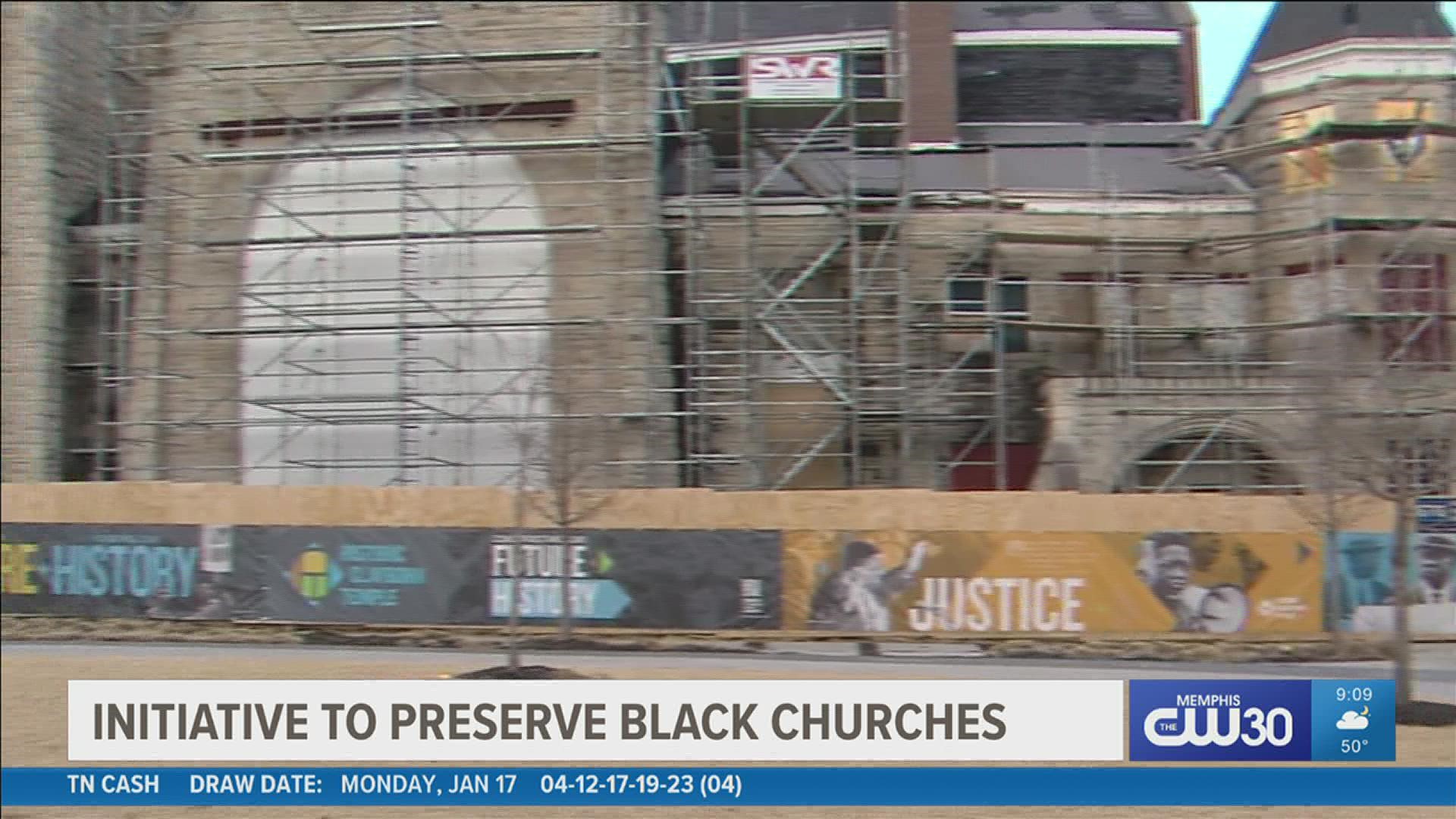MEMPHIS, Tenn. — A new roof, new masonry and new stained glass windows are part of the construction for the historic Clayborn Temple.
Preserving Black Churches, a new $20 million initiative under the National Trust for Historic Preservation, is working to support them.
“Once we’re done with this phase we still have a broken inside that we still need to get fixed,” said Anasa Troutman, executive director of the Historic Clayborn Temple. “Funds like this from the trust, means that we can continue our work of preservation.”
Troutman said the national grant fund for black churches across the U.S. will "help preserve and protect black houses of worship”.
The Lilly Endowment Inc. gave the money to the African-American Cultural Heritage Action Fund, which is under the National Trust for Historic Preservation.
“Over the next 3 years we will look to award grants to churches across the country and then we’ll also have some very targeted programs,” said Tiffany Tolbert, the associate director of the Action Fund. “We’re going to work specifically with churches that are associated with the civil rights movement in Alabama. As well as churches that are instrumental in civil rights and social justice.”
Tolbert grew up in a historic church in Alabama.
“A lot of where I am today and a lot of my family is due to the role we had in the church and how the church invested in our family,” Tolbert shared.
“The other thing that I think is important to say and that I love about this,” is that the partnership between Lilly, and their understanding that we need to support this work, but their acknowledgment that they were not the people to make the choices about where the money goes,” explained Troutman.
For Black people, worship houses have been a place where neighbors would walk to church on Sundays and Wednesdays with their families weekly.
“If you’re thinking about restoring a building without thinking about restoring a community that made that building significant, then I feel like the work is only half done,” said Troutman. “Back when these churches were opened they were the heartbeat of the community.”
At Clayborn Temple, sanitation workers made protest signs in the basement in 1968.
“We can still lean on the leadership of King and the ideas that he was forming as he was entering the end of his life,” commented Troutman. “Because that history literally lives in the DNA of Clayborn Temple and if we can get it back open, and bring it back to the people we cannot just celebrate the past we actually can create the future together.”
It's part of a future where the Black church can still serve as an anchor in the community.
Information on grants, programs, and resources will be announced in the summer of 2022.

